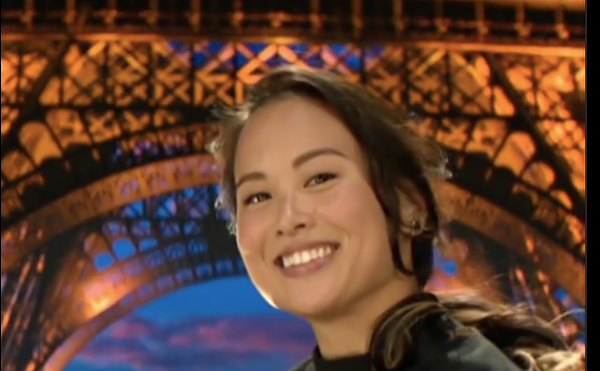Throughout March, the Kentucky College of Art + Design (KyCAD) will be presenting "Solve et Coagula," an exhibition concerning "the power imbued to art objects and deeper meanings generated through the processes of moldmaking and casting," at the 849 Gallery (849 S. 3rd St.)
Participating artists include Ed Hamilton (Louisville, KY), Joyce Ogden (Louisville, KY), Andrew Marsh (Louisville, KY), James Wade (Lexington, KY), Gwen Yen Chiu (Chicago, IL), Richard Hunt (Chicago, IL), FÁTIMA (Chicago, IL), and Karen Lofgren (Los Angeles, CA).
LEO writer Jeff Polk interviewed Feral Fagiola, the show's curator, and Andrew Cozzens, the director of the 849 Gallery, via email.
This interview has been edited for length and clarity. LEO: What was the inspiration behind putting this exhibition together?
Andrew Cozzens: The idea to develop the exhibition started with a sculpture class and a community partnership. I was teaching STU230: Making Methods: The Artisan, which is a process-heavy sculptural class that was focusing on moldmaking and casting. We covered many different processes and materials, including plaster, silicone, wax, and chocolate. Having a background in foundry work, I really wanted the students to have the experience of casting in metal. This produced a great opportunity to partner with a Louisville gem, the Falls Art Foundry. After discussing the class with Matt Weir and Scott Boyer at FAF, we decided that we would take molds created in class by the students and use the lost-wax method to cast their sculptures in bronze. It is a fantastic process to witness!
KyCAD’s 849 Gallery is a good platform to capture and celebrate the work that is being created by professional artists, local arts organization, and students. Thus, this particular class and partnership was a great opportunity to host a curated exhibit surrounding the theme of casting.
Explain what one can expect to see at "Solve et Coagula."
Fagiola: One can expect to see sculptural compositions, ritual relics, and even fiery molten metal performance backed by an industrial noise soundtrack.
Without revealing too much about the work inside, I will say that there is a wide range throughout the show. There are even a couple of Easter eggs from the former Vogt Machine Company, which had a foundry operation on the edge of the Old Louisville neighborhood.
Cozzens: Alongside Feral Fagiola’s curated artworks are a series of bronze pieces created by artists from the Falls Art Foundry and KyCAD students from the moldmaking class.
What are the biggest challenges of setting up and curating an exhibition like this?
Fagiola: Logistics is always a challenge with putting together an exhibition, but the solutions to those problems are relatively straightforward. The most difficult part for me was narrowing down which artists to include. I am fortunate to know many incredible artists working with casting and have been involved with that world through my own work. The affective nuances and conceptual possibilities of the casting process are more vast than one might expect. I hope to offer viewers a glimpse through this small selection of works.
What work(s) will you be exhibiting, and what are the inspirations behind it/them?
Fagiola: For this exhibition, I am thinking of artists as alchemists. I am showing artists who use the process of casting not just as a means to an end, but as a purposeful and transformative action in the creation of their work. The artworks in “Solve et Coagula” vary in their intention, but they each harness and expel that power in some way.
Some of these works involve ritual and repetition to mark the passing of time, while others capture impressions of significant personal artifacts and give them new life. Many of the artworks are connected to the body and charged with erotic or ecstatic energy. Some act as fiery effigies to evict pain from the body.
Looking through the works of the artists included in this exhibition, there is an array of different influences and styles involved. Do you feel this diversity will work well together? Why?
Fagiola: Although their formal expressions are quite diverse, these artists all share the meaningful use of casting in their practice. There are connective threads flowing throughout the exhibition, and you can expect to see a lot of works energizing each other from across the room and conversing in unexpected ways.
One of these connective threads is in the various material stages present in the show. These states of matter seem to come full circle, just like the process of reproduction through casting. This may have to do with how industry and nature mimic one another and are cyclical in their materiality. Iron, for example, is mined from the earth, smelted, and cast into countless forms to serve our heavily industrialized society. Iron and steel rust, deteriorate, and turn back into dirt, much like our own bodies. Each of those stages is represented in this exhibition.
What do you hope visitors will take away from "Solve et Coagula"?
Fagiola: I hope visitors take away a sense of casting as a powerful artistic method to transform and charge objects in addition to being an industrial process of reproduction. The breadth of casting is vast and entangled with our society and history in more ways than you might consider.
I also hope that visitors walk away having experienced and been moved by the languages of material and process. The artists in this show speak through these languages to express bodily and spiritual experiences which defy written or spoken words. They also use these languages in a generative sense, to create meaning and enact their purpose.







